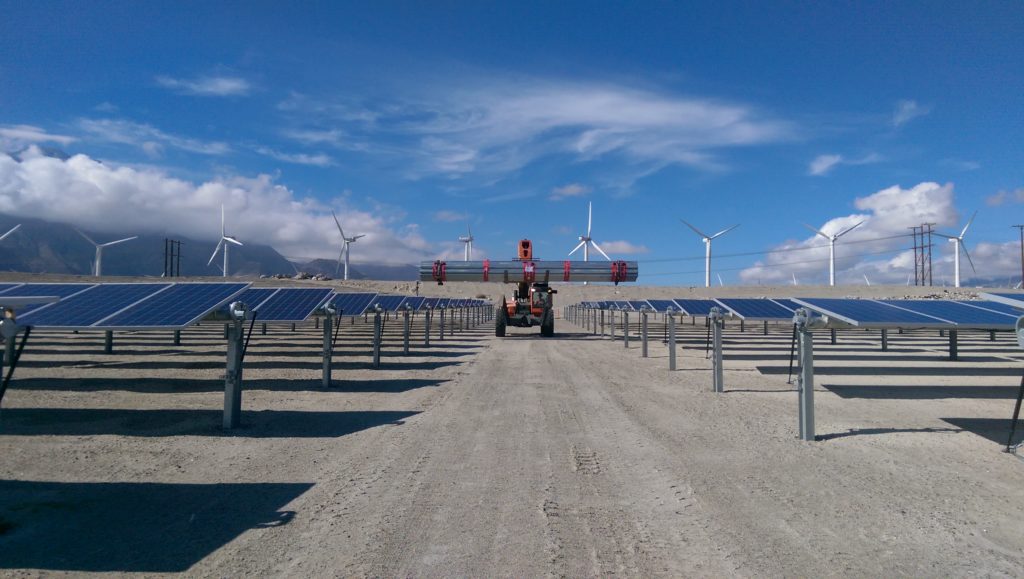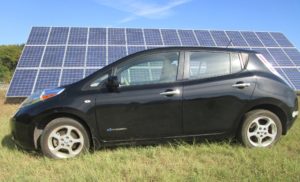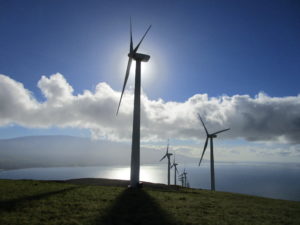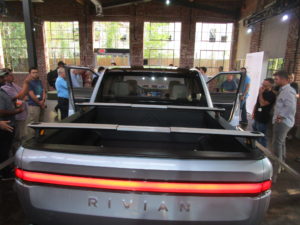Now for something completely different! I’m taking a break from the numbers to focus on a podcast episode John found last year. Ezra Klein (of Vox Media) did a Climate Change Series and one of his guests was Saul Griffith, an inventor and energy expert. Saul’s main points, as I understand them, are that we need to do a lot of things, we are CAPABLE of doing them, and the resulting future can be awesome.
Saul’s website leads with the following quote:
“I think our failure on fixing climate change is just a rhetorical failure of imagination.
We haven’t been able to convince ourselves that it’s going to be great.
It’s going to be great.”
Every time I go back to this podcast and these ideas, it makes me smile. So in the interest of doing something positive this week, here is a link to it so you can listen to it too:
https://pod.link/theezrakleinshow/episode/Y2ZmMzFjYWUtZmE3My0xMWU4LTkyN2EtNjM1OWRmZDA5NmUx
I pulled out a few of his ideas to highlight:
This is a transformation game; it’s no longer an efficiency game. We can’t “efficiency” our way out of this. The focus needs to be on decarbonizing – we can have everything we have now (probably more) except without emitting carbon gases.
The biggest push needs to be the electrification of things PLUS decarbonizing the electricity generation.
Saul discussed seven possible paths that people are discussing, energy-wise, in an article on Medium.
1. All renewables, all the time
It can be done. The numbers say it would be mostly solar and wind.
We need land for solar, and distributed solar is important to reduce transmission line losses and cost. For the purpose of picturing how much we need, Saul says that for every road that already exists, we need 1-2 roads alongside it that are covered in solar.
The challenges are winter and storage. Batteries are not efficient for storing energy for 6 months. So the summer-winter spread is an issue. Also day-night to a lesser extent (batteries are good for this, also wind that blows overnight in some areas).
How do we install a whole bunch of solar? We need a rally, incentives, financing, an “arsenal of democracy” (see World War II). High volume, low interest, state-backed loans available now.
With all-renewables, there is no need to reduce what we have. Electric machines are twice as efficient as fossil fuel based machines, i.e. if we changed all fossil fuel machines to electric machines, we’d need less than half of the energy to run those machines.
Because many of our machines are currently fossil fuel based, after converting to electric machines we would need 3 to 4 times as much electricity as we need now. Half of what is needed can come from solar on buildings and parking lots. We need some distributed solar and some utility scale solar.
2. Nuclear
It’s very polarized and debated. There’s a history of accidents, use as weapons, protests, and a “war” between pro and anti nuclear people.
However, including it as part of the mix makes things much easier. It’s already here, and we need to keep those plants in order to move quickly. In some places it just makes the most sense. Having some nuclear does buy us a lot of time.
But to use only nuclear, we would need 10,000 plants globally, and that’s probably not realistic based on timelines, cost to build, and the political fight.
The cost comes from security required, permitting, the interest rate on the loan while waiting years for approval, and tracing the source of every part that goes into building it. Regulatory costs make it more expensive.
Plus transmission cost, e.g. 7.8 cents per kWh in one example. Distributed solar is much cheaper because you generate it in the same location that you use it.
Nuclear efficiency is good and can/should be one piece of the answer for the current timeline we’re working with.
3. Fossil fuels with massive carbon sequestration, i.e. perpetuating the status quo
How would this be done? At what cost?
Burning fossil fuels results in CO2 and other gases. We’d need to capture the gas, squeeze it down by 4-5X in size, and then put it – where? Giant bubbles of compressed CO2 in the bottom on the ocean that we hope doesn’t leak?
This doesn’t pass the sanity test.
4. Miracle technology
Such as fusion, direct air capture, invent something…
We can’t rule out fusion, it just might not be possible to scale it down sufficiently. Keep working on it. Miracle solutions are still possible.
However, focusing on this possibility is not actually necessary and it’s a huge distraction.
We can solve the problem NOW without waiting for some miracle that might or might not happen, and might certainly not happen quickly enough.
Emphasis: These are not binary choices! These are different solutions that exist on different timelines. We should focus on making progress now while waiting for The Miracle. Our time frame requires us to do most of these things on this list anyway.
So yes, make energy research a priority but don’t bet on it immediately (or anytime soon).
5. Deprivation
Do we need to reduce what we use? The concept of growing less (economy, population), or that we’ve already lived beyond our means…
Saul says this is like saying, “If we try really hard and sacrifice a lot, the future will suck slightly less than it would otherwise.”
For the first time, we have the capacity to supply a great quality of life to 10 billion people. But do we have the political means to deploy it?
We have not painted a picture of the future that is more awesome in the way that it actually could be. At this point it’s just an engineering task.
6. Geo-engineering
We might need some of this in order to buy time as we solve the overall problem.
Some of the concepts (that don’t sound great to me) include artificially controlling sunlight/temperature, sulfurous dust, space mirrors… These don’t help with the acidification of the oceans, which might be one of the biggest problems we face.
Carbon capture from the atmosphere? Of all the things we move, dirt is the thing we move most, CO2 is #2. Maybe some form of carbon capture would help.
Change the way cement and concrete are made. Manage forests better. These are more reasonable ideas to focus on.
7. Carbon tax and carbon pricing
You can price carbon and let the market make the choices. There’s nothing wrong with this idea. It will start moving things the right way, but it might take 20 years, when realistically we have only 3-4 years to make major changes.
#1 = we need to remove subsidies from fossil fuels.
A carbon tax can help most with the edge cases – e.g. change the pricing for a different method of producing cement that makes it cheap enough to be worth doing. Push forward the good ideas that might otherwise be cost-prohibitive.
———————————
For this list of 7 strategies, it’s not a “pick one and only one” binary choice. We need some of almost everything:
– Renewable energy (mostly solar and wind)
– Electrification
– Some nuclear
– Changing cement manufacturing
– Managing forests better
– A carbon tax is a good idea
– Research new technologies
Thinking about the future of energy worldwide, look for similarities in local climate and population density. Run experiments in different places and figure out the best solutions for that location.
For example:
Singapore, New York City – cities so dense that you can’t put up enough solar to power it all, so nuclear is a good option there
Hawaii, Australia – it already makes economic sense to use renewables and batteries
We need to show a vision for a future that is BETTER.
An example – during the Space Race, NASA hired artists to illustrate what it was they were aiming for. Not just imagining it, but describing it in words and pictures.
We should show how awesome it would be if we decarbonize our lifestyle. It could be a huge success story for all of us.
Imagine the future being great:
– Your electric car is powered by wind overnight or by the sun during the day + batteries overnight
– Cooking is done with induction (which is programmable, quick and efficient)
– Air quality is better. Get rid of fossil fuels for heating and cooking and in return you get health quality improvements. And that’s just inside your house.
– Heating could change from using forced air (which requires filters, leads to allergies and dust bunnies) to using radiant floor heating; also the air is no longer dry
Show how a full set of solutions leads to a better future. And the economics are at a tipping point for making this happen. Saul says that an electric vehicle plus heat pumps plus solar could save the average family $1000-2000 a year, with no downsides.
Paraphrasing William Gibson: “Decarbonization is here, it’s just not equally distributed yet.”
90% of the carbon you produce and the energy you use is dictated by these key decisions:
– Where you live in relation to where you work or go to school
– The type of vehicle you drive
– Your house heating system
– What you eat
But there is a limit to what we can do with individual consumer choices. Individual action is good, but it can’t fix the biggest problem – we need to solve it at the infrastructure level in order to decarbonize across the board.
It is solvable. This would be equitable, healthy, and it would create lots of jobs in all zip codes. America can lead the world again in solving a giant problem. There are plenty of examples where the U.S. solved problems outside of free-market economics, and we have always reaped tons of rewards for doing so.
Imagine: Investing in a clean future, one that included everybody, with more affordable products that lead to solutions (a positive path).
Everyone needs a job to make this happen. Lawyers get the job of prosecuting to remove laws that are in the way of progress. We need smart regulations that allow for the proliferation of solar, charging stations, and heat pumps.
Climate scientists give us the data we need, but they don’t have a conversational way to talk about infrastructure, home and car maintenance, financing.
We need the engineers and the contractors.
We need visionaries with a science fiction imagination.
We need communicators to show us a vision of a world with much less air pollution. A vision of how awesome it is to electrify. A vision of financing to make it work.
A vision of a better future.
Another interview with Saul, in text form, with similar (awesome) information about decarbonization:






